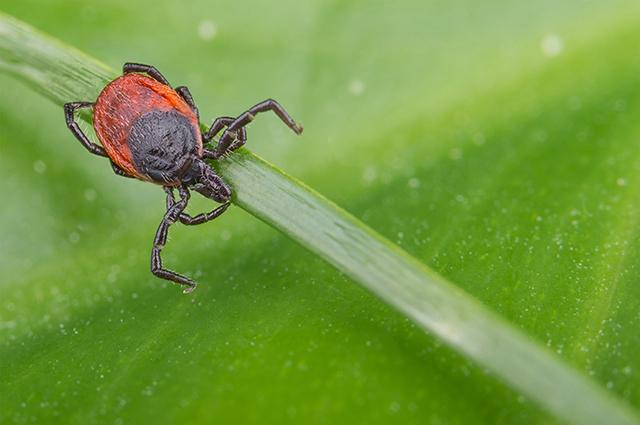-
About
- Departments & Offices
-
Academics
- Physician Assistant
- Special Master’s (MBS)
-
Admissions & Financial Aid
- Tuition & Fees
-
Student Experience
-
- Student Resources by Program
- Academic & Student Support
- Wellness & Wellbeing
- Student Life
- Events & Traditions
-
-
Research
- Research Labs & Centers
- Tufts University-Tufts Medicine Research Enterprise
-
Local & Global Engagement
- Global Health Programs
- Community Engagement
Tufts Lyme Disease Initiative Receive $7 Million in New Grants
Investigators for the Tufts Lyme Disease Initiative have received new grants totaling over $7 million dollars to combat Lyme disease

Investigators for the Tufts Lyme Disease Initiative (www.tuftslymedisease.org) have received new grants totaling over $7 million dollars to combat Lyme disease.
Drs. Linden Hu and Sam Telford received a $3.8 million grant from NIH to study the potential of eradicating Lyme disease by targeting mice and ticks with a novel antibiotic. The use of doxycycline administered to mice and ticks in the wild has been highly effective in eliminating the Lyme disease causing bacteria from animals and ticks in the wild. However, due to concerns about the development of antibiotic resistance, it is not a viable strategy for Lyme eradication. Working with Dr. Kim Lewis at Northeastern University, the team has identified new compounds that specifically target weaknesses unique to the Lyme bacteria and are not in use as human antibiotics. These compounds will be tested for their ability to eradicate infection in the wild. The goal is to decrease human infection by reducing (and eventually eliminating) Lyme disease infection in nature.
Dr. Linden Hu received a $3.1 million grant from NIH to study how mutations in genes important in immune defense lead to persistent inflammation in response to the Lyme disease bacteria. Infection with the Lyme disease bacteria causes inflammation and serious conditions such as meningitis and arthritis. This inflammation typically resolves even without antibiotic treatment. The symptoms of Lyme disease are caused by the immune response and not by the bacteria itself. Since the inflammation is more dangerous than the bacteria, the immune system pivots to ignore the bacteria over time using a mechanism called “tolerance”. The team believes that the Lyme disease bacteria takes advantage of systems designed to allow humans to tolerate “good” (called commensal) bacteria in the gut. The Lyme disease bacterium would be the first example of an invasive bacteria that under normal circumstances, gets treated by the immune system like a commensal organism. Working with Dr. Klemen Strle at the Wadsworth Institute, the team has identified mutations in genes that break this tolerance and result in prolonged and increased inflammation. Understanding how the immune system regulates its responses to bacteria that are not directly harmful could open the pathway for new immunotherapies designed not to kill bacteria, but to allow them to co-exist in peace without causing symptoms.
Dr. Tanja Petnicki-Ocwieja received a $160,000 grant from the Global Lyme Alliance to study the effects of oxidative stress on priming the immune response and modulating responses to the Lyme disease. Dr. Petnicki-Ocwieja will be examining how reactive oxygen species, which are generated by the immune response to kill bacteria, may also be used to alter the responses to the organism and either increase killing of the Lyme bacteria or dampen the immune response.
Department:
Immunology